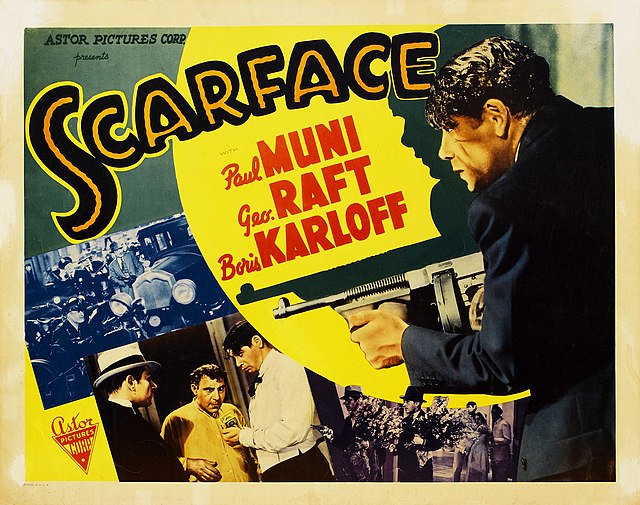4K Restoration of 1932 Film ‘Scarface’ Offers Opportunity To Experience the Deft Directing of Howard Hawks
Notwithstanding its moralistic add-ons, flagrant comic touches, and dated character types, ‘Scarface’ retains its brute primacy, an explosive sense of oncoming disaster, and inevitable comeuppance.

Howard Hawks’s “Scarface” (1932) should, by all accounts, be an ungodly mess. The tale of public menace, ruthless ambition, and an American dream gone awry went through significant convolutions in development and myriad controversies upon completion.
Although the screenplay was adapted from Armitage Trail’s novel by playwright Ben Hecht, it was subsequently diddled with by at least four additional writers. The Criterion Collection has just released a 4-K restoration of this seminal movie.
When the completed script was passed through the offices of the Hays Code, “Scarface” underwent, if not complete adulteration, then alterations and additions. Arrant violence and its glorification were frowned upon, and let’s not forget tidings of incest. Ever the control freak, producer Howard Hughes meddled with the project after Hawks refused to make concessions. Among the people happy with the end result was a gangster upon whom the story was based, Al Capone. He gave the picture an enthusiastic thumbs-up.
Not that Capone wasn’t worried about his media profile. According to Hecht, the mob leader sent a pair of emissaries to Hollywood as fact checkers. A former gangland reporter, Hecht gave Capone’s thugs a song-and-dance about the title character being an amalgam of various underworld figures. Really? The allusions to Capone peppering the story were fairly one-to-one, not least Hawks’s recreation of the St. Valentine’s Day Massacre. And what about the telltale scar?
The film proper begins with a sermon spelled out in title cards: “This picture is an indictment of gang rule in America and of the callous indifference of the government in this constantly increasing threat to our safety and our liberty.” There are more sermons forthcoming in which sundry characters — a cigar-chomping chief of police and an impassioned newspaper magnet — expound on the scourge of organized crime and what to do about it.

“Scarface” is the story of Tony Camonte (Paul Muni), a henchman to mobster Johnny Lovo (Henry J. Vejar) and a bully boy who has little compunction about murder, no regard for hierarchies, and an eye for the ladies — particularly Lovo’s gal pal, Polly (a luminous Karen Morley). Camonte is shameless in his attentions, but Lovo cuts him the requisite slack: It’s not every lackey who has the chutzpah to gun down his old boss as a first step up the corporate ladder.
As played by Muni — who plays it big — Camonte is a psychopath prone to cutesy malapropisms and animalistic desires. Nor is he afraid of making inroads on mob territories for which Lovo would prefer to lay low. Camonte is accompanied by his loyal aides-de-camp, the bumbling Angelo (Vince Barnett) and the coin-flipping Guino (former song-and-dance man George Raft). When Irish mob boss Tom Gaffney (an oddly cast Boris Karloff) attempts to kill Camonte, Camonte retaliates. Violence escalates; the city pays dearly for it.
An arresting tangent of the film centers on Camonte’s homelife. His long-suffering mother (Inez Palange) hunkers down in a disabused tenement building, perpetually toiling and fretting about her children. Tony’s self-entitled brutishness is the least of her problems. There’s also daughter Francesca (Ann Dvorak), who is not only a precocious 18-year-old but has an unseemly hold on her brother. Dvorak — slinky, sexy, wide-eyed, and irresistible — almost steals the film out from under Muni. Every time Francesca is on screen, “Scarface” gains in excitement, and danger. Dvorak is unforgettable.
Notwithstanding its moralistic add-ons, flagrant comic touches, and dated character types, “Scarface” retains its brute primacy, an explosive sense of oncoming disaster, and inevitable comeuppance. The movie made Muni a Hollywood player and his anti-hero an icon on par with Edward G. Robinson’s “Little Caesar” and James Cagney’s “Public Enemy” (both 1931). But it’s Hawks who carries the day with cinematic flourishes that are as loud and flashy as the tommy-guns wielded by his protagonist. Hawks was among the sharpest directors to settle in behind a camera. Here’s another of his movies that proves as much.

